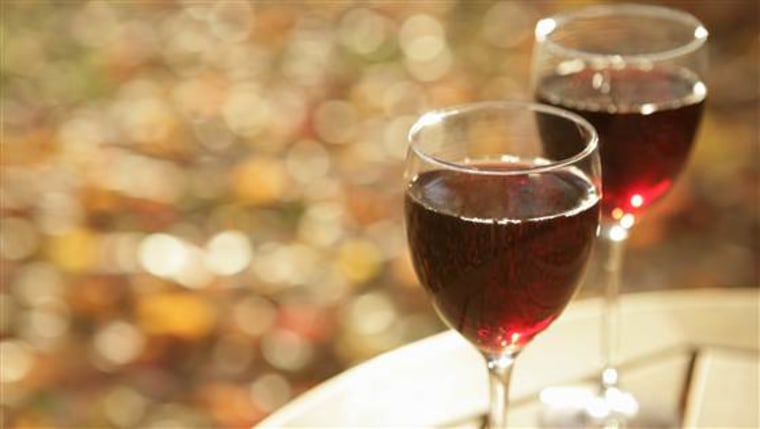There’s a time and place for rosy cheeks, but anyone who’s experienced chronic red, blotchy skin would probably do anything to avoid it. In fact, a survey from the National Rosacea Society and Galderma Laboratories found that 63 percent of rosacea sufferers have avoided situations because they were embarrassed or uncomfortable about the look of their skin.

“Rosacea is a common skin disorder that causes redness, broken capillaries and pimples on the face,” explained dermatologist Dr. Rosemarie Ingleton, who is an educator with skincare brand Eucerin. More than 16 million Americans struggle with the chronic condition, according to the National Rosacea Society, yet 78 percent of us don’t know anything about it. We asked experts to give us the lowdown:
RELATED: Chemicals in makeup? What to know about the natural skin care movement
It’s not just about redness.
While redness is the predominant symptom of rosacea (hence the name), sufferers also can experience spider veins on the face, thickening of the skin, red eyelids and burning sensations — and these symptoms can hit at any age.
Rosacea doesn't just affect light skin.
“Rosacea is more common in fair-skinned, blond-haired, blue-eyed people of Celtic or Scandinavian ancestry, but can be seen in any race,” Ingleton said. So if you’re olive-skinned, Latina, Asian or African-American and noticing symptoms, don’t assume it’s something else — and make an appointment with a dermatologist to know for sure.
RELATED: 5 products that will keep your skin healthy, hydrated and moisturized
You’ve gotta trust your gut.
If redness has ever made a surprise appearance while you were at a dinner party or sipping vino with friends, you’re probably already aware that certain foods will trigger your rosacea. One easy way to know if a particular food might cause a flare up? If it troubles your tummy, it’ll probably bother your skin. “Anything that irritates your gut should be avoided,” said Dr. Ben Johnson, founder of Osmosis Pur Medical Skincare, who cites gluten, antibiotics, fluoride, hard alcohol and synthetic, highly preserved foods as common culprits. Focusing on your digestive health — whether it’s popping probiotics or trying an elimination diet to isolate trigger foods — is likely to calm rosacea as well.
Sunlight is your Kryptonite.
The sun, Ingleton said, causes blood vessels to dilate, which worsens the redness of rosacea. “It’s important to wear a daily broad-spectrum sunblock on the face and avoid excessive heat exposure and sunburns” she said. And, Johnson added, frequent sunburns on rosacea-prone skin will age skin faster than normal.
In vino veritas.
Just like excessive sunlight, “red wine causes a more vigorous dilation of blood vessels, possibly because tyramines and histamines get released into the skin, but this has not been proven to be the case,” Ingleton said. Try exploring the wonderfully wide world of white wines instead — and remember that rosés are generally grouped with the reds. Or, do one better and sip anti-inflammatory green tea.
It ain’t acne.
Treating rosacea skin with a harsh anti-acne regimen is likely to backfire — big time. The two conditions are very different, Ingelton stressed. “Rosacea consists of redness, broken capillaries and red pimples, while acne consists of whiteheads, blackheads, red pimples and pus bumps," she said. "I tell rosacea patients to use gentle skincare products and always apply a non-irritating SPF daily.”
RELATED: 4 healthy truths about wine, chocolate, sleep and sugar
Skip the Sichuan.
A hankering for hot sauce can exacerbate rosacea. “The most common triggers are excessive heat or cold exposure, hot spicy foods, caffeine, alcohol — especially red wine, and skincare products that cause the skin to tingle and turn red,” Ingleton said.
Topical transformers.
Ingleton said Mirvaso, a recently FDA-approved topical gel medicine, looks promising. “Until now there have not been any prescription products to control the redness, which is the major complaint of people who have rosacea,” she said. “Mirvaso gel causes the blood vessels to stay constricted for approximately 10 hours, and keeps rosacea patients free of redness for about 10 hours.”
Non-prescription solutions include selecting skincare products based on their mildness. Moisturizers containing licorice root, which has been clinically proven to reduce blotchiness, could minimize flare-ups. Today.com's top product pick is Ole Henricksen Sheer Transformation. When it comes to cleansing, skip the exfoliators and opt for an especially gentle product. We like Indie Lee Rosehip Cleanser or The Body Shop Aloe Calming Facial Cleanser.
This story was originally published May 1, 2014.